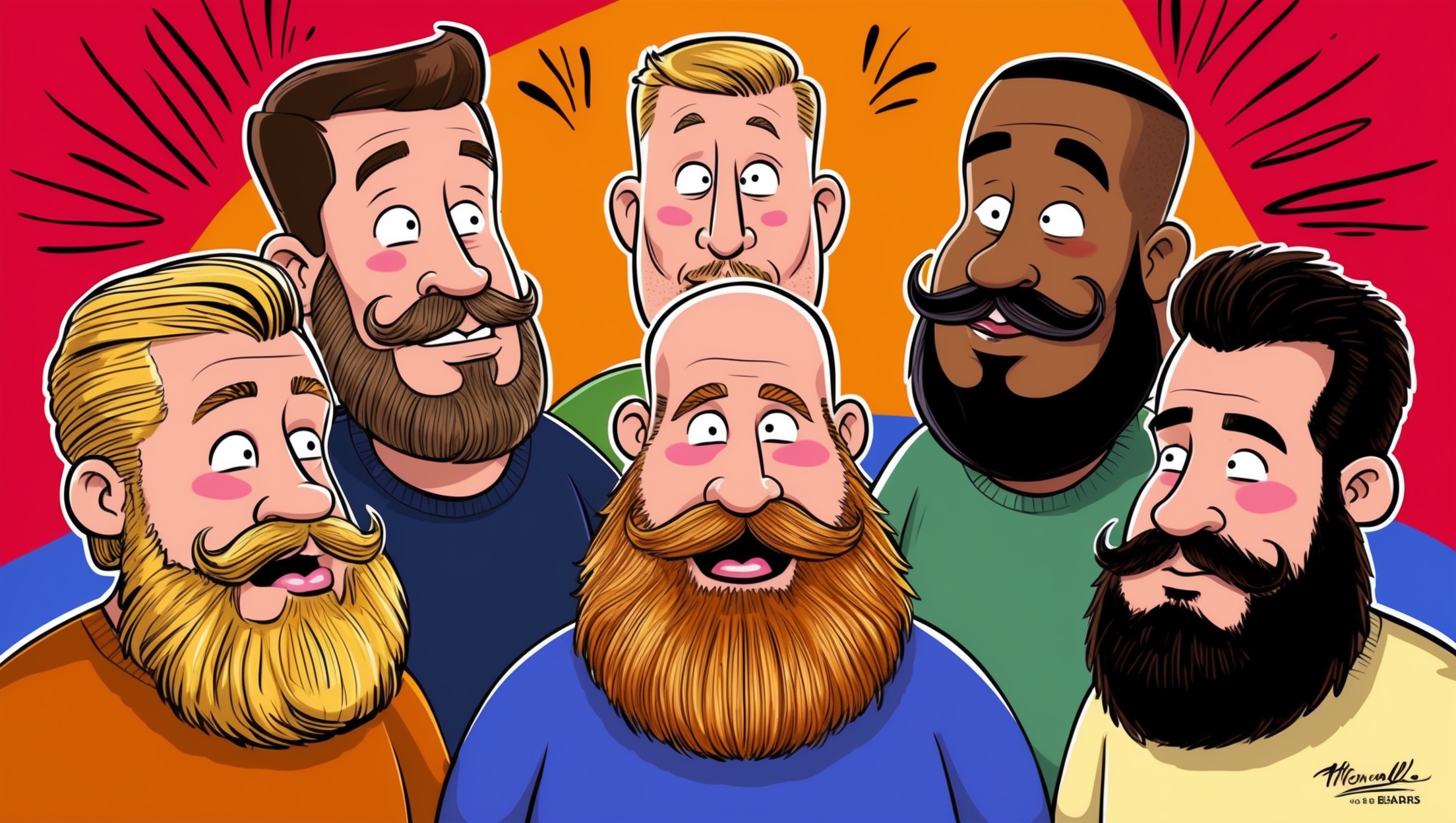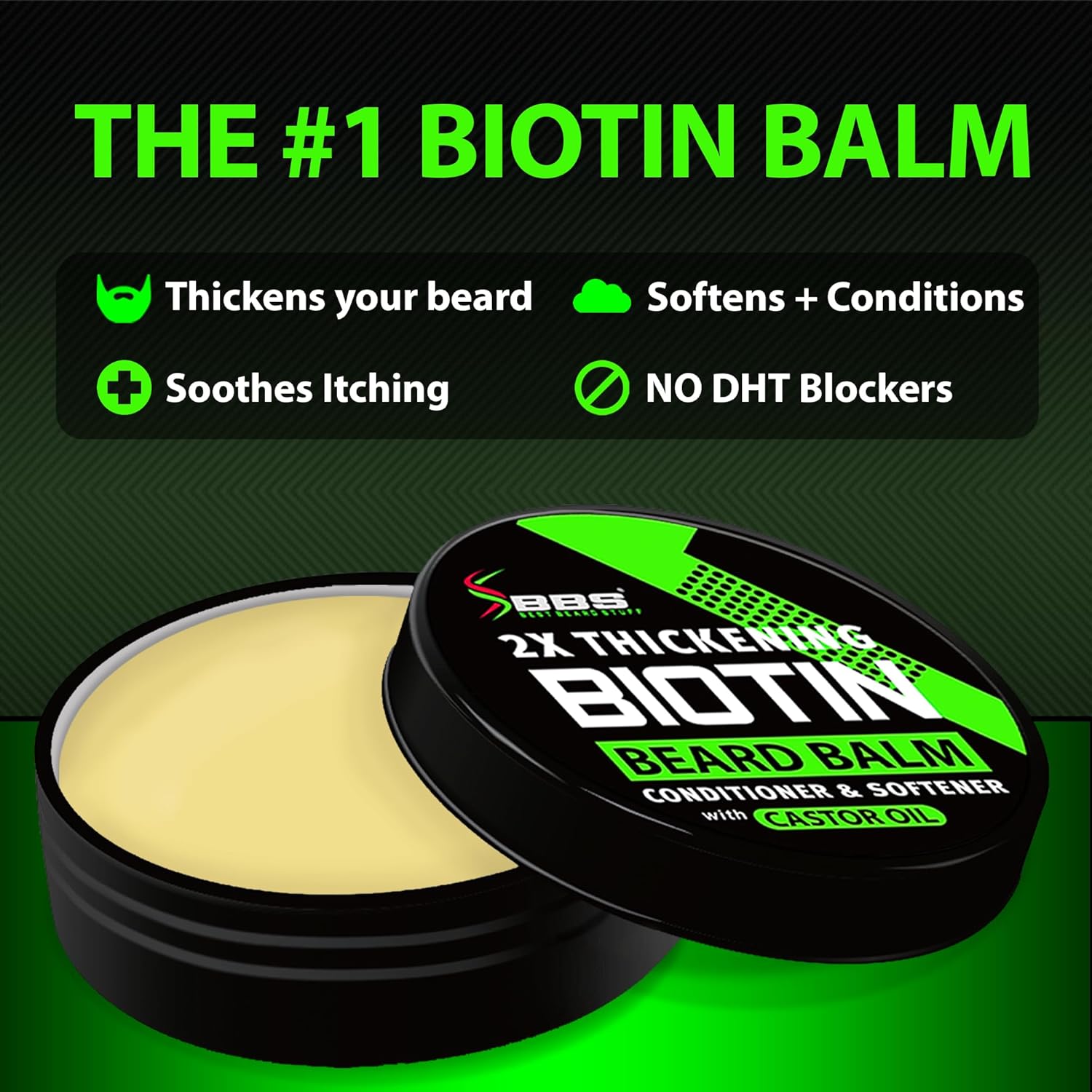
In the complex world of attraction, the role of men’s beards in shaping women’s preferences has intrigued both researchers and those interested in evolutionary psychology. Recent studies challenge the long-held belief that such preferences are tied to hormonal changes, suggesting instead that the draw of facial hair attractiveness may not be as closely linked to a woman’s ovarian cycle or hormone levels as once thought. This revelation opens up a fascinating exploration into how female mate choice is influenced by factors beyond mere biology, prompting a deeper look into the social and cultural dimensions of beard grooming. As we delve into this topic, we’ll uncover insights into how beards have become symbols of masculinity and social dominance, and what these findings mean for the everyday bearded individual navigating both personal grooming and broader social perceptions.
Understanding Women’s Preferences: At Least for Men’s Beards
The Science Behind Men’s Beards
Men’s beards have long been a subject of fascination in the study of human attraction. Scientifically, beards are seen as a secondary sexual characteristic influenced by androgens like testosterone. These hormones play a crucial role in facial hair development, setting the stage for beards as a marker of sexual maturity and masculinity. Interestingly, while beards are often perceived as signals of strength and social dominance, recent studies reveal that women’s preferences for facial hair are not significantly influenced by hormonal changes during the menstrual cycle. This challenges traditional evolutionary psychology theories that suggested a direct link between female mate choice and reproductive hormones. Instead, it opens up discussions about the broader social and cultural factors that contribute to perceptions of facial hair attractiveness. Understanding the science behind beards helps unravel the complex dynamics between biological traits and societal values, offering new insights into human attraction.
Hormonal Influences on Attraction
Hormonal influences on attraction have been a focal point in understanding human mate preferences. Traditionally, it was believed that a woman’s attraction to certain male features, such as beards, fluctuated with her menstrual cycle, supposedly peaking during the fertile phase. This theory suggested that during ovulation, women would prefer more masculine traits, indicating genetic fitness and health. However, recent research challenges this notion, revealing that preferences for men’s beards do not significantly vary with hormonal changes. Studies show that neither levels of estradiol nor progesterone have a substantial impact on women’s attraction to facial hair. This suggests that hormonal influences may not be as pivotal as once thought in determining mate choices, indicating a more complex interplay of psychological, social, and cultural factors. Understanding these dynamics is essential, as it shifts the focus from purely biological explanations towards a more nuanced view of attraction and human relationships.

Misconceptions About Beard Attractiveness
Female Mate Choice and Beards
Female mate choice and beards have often been linked through the lens of evolutionary psychology, which posits that women prefer bearded men for evolutionary benefits like protection and genetic robustness. However, recent insights challenge these traditional views, showing that the relationship between beards and attractiveness is not as straightforward as once believed. While beards can signify maturity and social dominance, they don’t necessarily correlate with a woman’s likelihood of choosing a partner. Instead, women’s preferences for facial hair appear more influenced by individual and cultural factors than by evolutionary pressures. This misconception stems from oversimplifying the complex nature of attraction, where personal taste and societal influence play significant roles. By acknowledging these diverse influences, we can better understand that female mate choice regarding beards is multifaceted, involving more than biological imperatives. This understanding helps dispel myths, offering a broader perspective on the diverse elements that shape human attraction.
Debunking the Hormonal Myth
The notion that women’s preferences for men’s beards are hormonally driven has been prevalent in discussions about attraction. However, recent studies have debunked this myth, highlighting that such preferences are not significantly tied to hormonal changes across the menstrual cycle. The assumption was that higher fertility phases would increase attraction to bearded men, seen as stronger or more virile. Yet, empirical evidence shows no consistent pattern linking reproductive hormones to preferences for facial hair. This challenges the simplistic view of attraction as primarily biologically driven, suggesting instead that social and cultural contexts hold substantial sway. By debunking the hormonal myth, we recognize the broader range of factors influencing women’s preferences, which include personal experiences, cultural norms, and individual perceptions. This shift in understanding encourages a more comprehensive approach to studying attraction, moving beyond reductionist explanations to embrace the complexity of human relationships and social influences.

The Role of Evolutionary Psychology
Facial Hair Attractiveness and Society
Facial hair attractiveness is not solely a product of biological and evolutionary factors but is also deeply embedded in societal norms and cultural contexts. Evolutionary psychology suggests that traits such as beards are attractive because they signal maturity and potential for resource acquisition. However, societal views on beards have fluctuated significantly over time, influenced by cultural trends and social norms. Today, beards can symbolize a range of attributes from ruggedness to sophistication, depending on societal interpretations. These perceptions are shaped by media representations, fashion trends, and even workplace standards, highlighting how social constructs influence what is deemed attractive. Understanding facial hair attractiveness thus requires acknowledging these social dimensions alongside evolutionary perspectives. As society evolves, so do the attributes and meanings assigned to facial hair, reflecting broader cultural shifts rather than static biological imperatives. This dynamic interplay underscores the importance of considering both psychological and societal influences when examining human attraction.
Cultural Impacts on Beard Grooming
Cultural impacts on beard grooming are profound and diverse, reflecting both historical influences and modern trends. Throughout history, beards have been symbols of wisdom, power, and virility in various cultures, with grooming practices evolving to reflect these values. In contemporary settings, the resurgence of beard popularity is partly driven by cultural icons and media portrayals that redefine masculinity and fashion. This trend has led to a booming market for grooming products and services, emphasizing well-maintained facial hair as a mark of personal style and identity. Cultural norms also dictate the acceptability of certain beard styles in different contexts, such as professional environments versus casual settings. As a result, individuals often tailor their grooming habits to align with societal expectations and personal beliefs. Understanding these cultural impacts is crucial for comprehending how beard grooming transcends mere aesthetics, serving as a dynamic expression of identity shaped by evolving societal values and cultural narratives.
Frequently Asked Questions About Men’s Beards
Why do some women prefer men with beards?
Preferences for men’s beards vary widely among women and are influenced by a range of factors, including personal taste, cultural background, and social context. While some women may find beards attractive due to perceptions of maturity, masculinity, or warmth, others might prefer a clean-shaven look. It’s vital to note that these preferences are not significantly dictated by hormonal changes, as once thought, but are instead shaped by individual experiences and societal influences.
Are men’s beards really a sign of health or virility?
While beards have historically been seen as symbols of strength and virility, current research indicates that these perceptions are more culturally constructed than biologically justified. Men’s beards do indeed develop due to hormonal influences such as testosterone, which is associated with sexual maturity. However, the attractiveness or health signals conveyed by a beard are largely interpreted through the lens of cultural and social norms rather than innate biological indicators.
How has the social perception of men’s beards changed over time?
Social perceptions of men’s beards have shifted dramatically throughout history. In some eras, beards have signified wisdom, religious devotion, or rebellion, while in others, they have been seen as unkempt or inappropriate in professional settings. Today, the resurgence of beards in popular culture—often associated with ruggedness or hipster fashion—has led to new norms around facial hair that blend traditional interpretations with contemporary style and individuality.
What are the best grooming practices for maintaining a healthy beard?
Maintaining a healthy beard involves regular grooming practices such as cleansing, moisturizing, and trimming. It’s important to keep the skin beneath the beard clean and hydrated to prevent dryness or irritation. Using beard oil or balm can condition the hair and help maintain a neat appearance. Regular trimming helps manage the beard’s shape and prevents split ends, further contributing to a well-groomed look that aligns with personal and cultural aesthetics.
By answering these commonly asked questions, we delve into the complexities of men’s beards and their role in contemporary society, offering insights that go beyond simplistic myths and embrace the intricate interplay of personal preference and cultural influence.





5 thoughts on “Decoding Attraction: Why Women’s Preferences for Men’s Beards Aren’t Tied to Hormones”